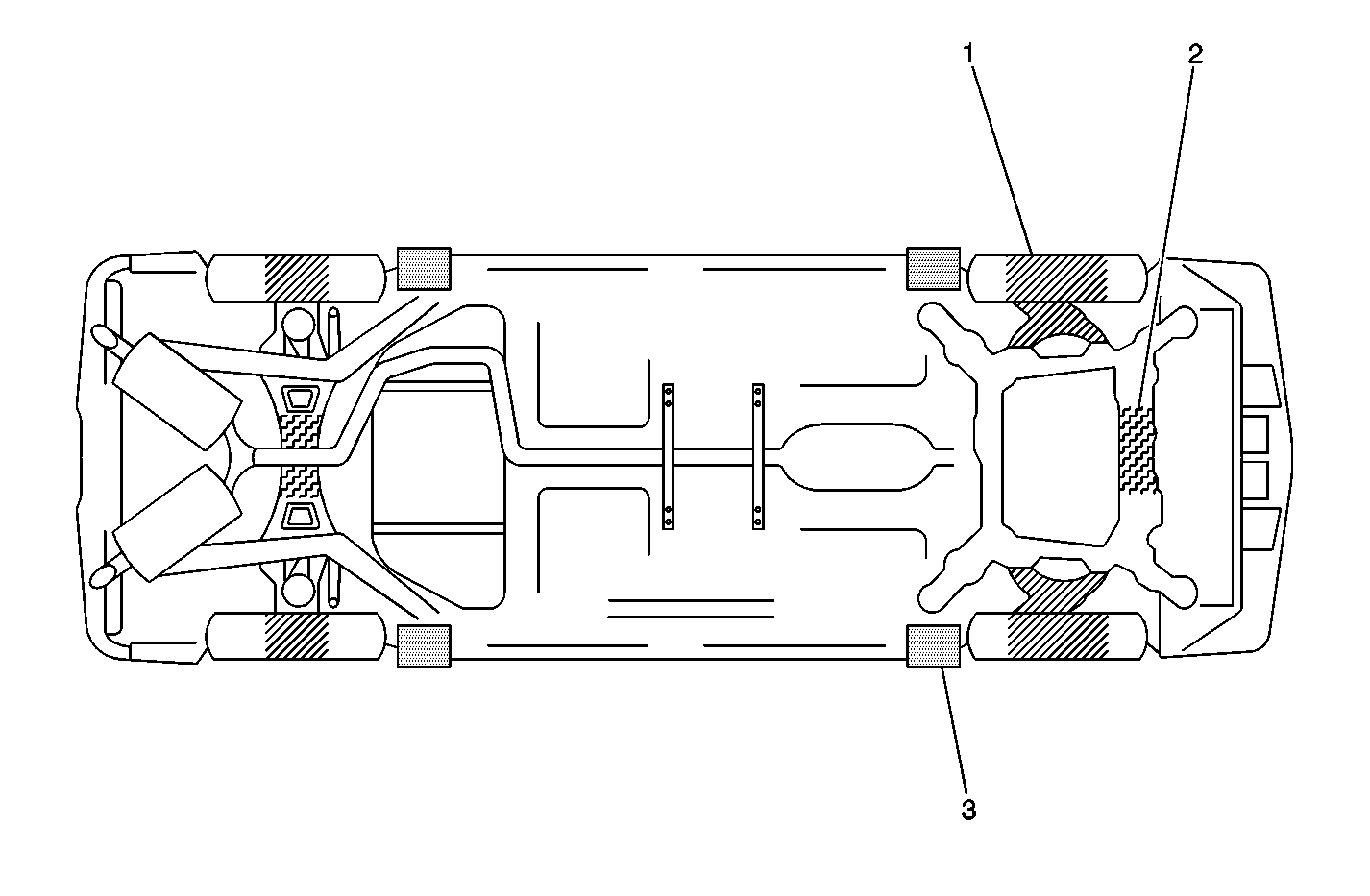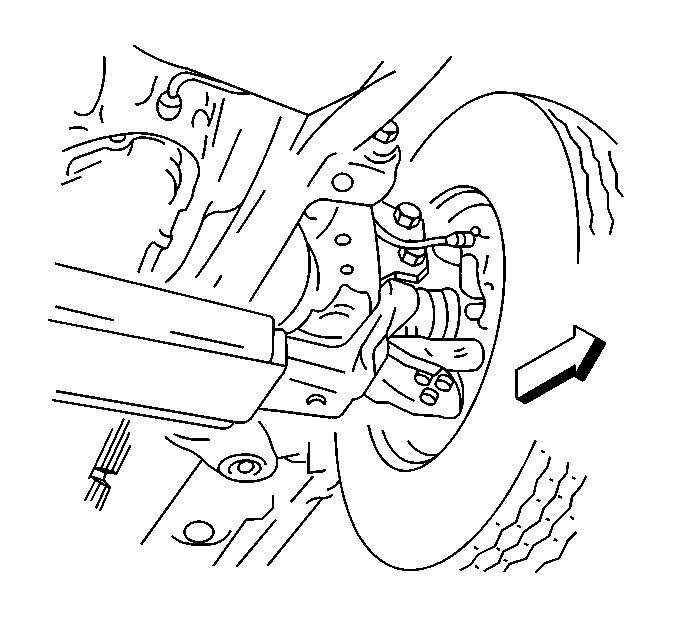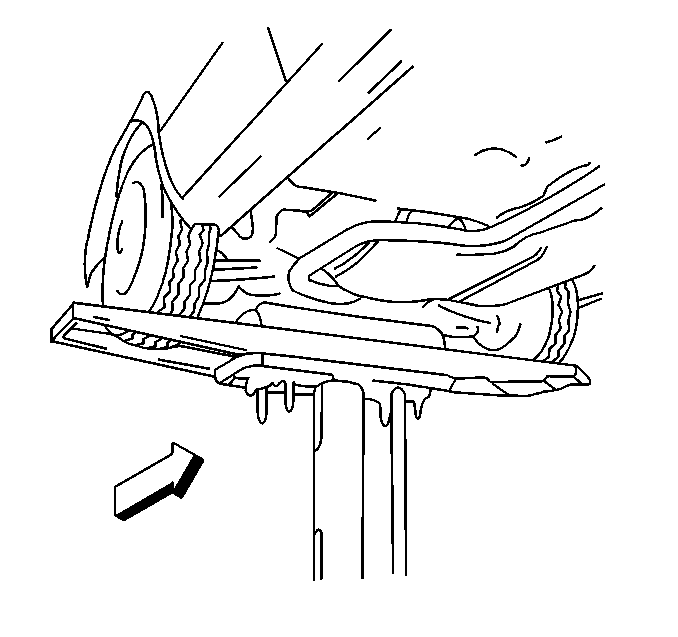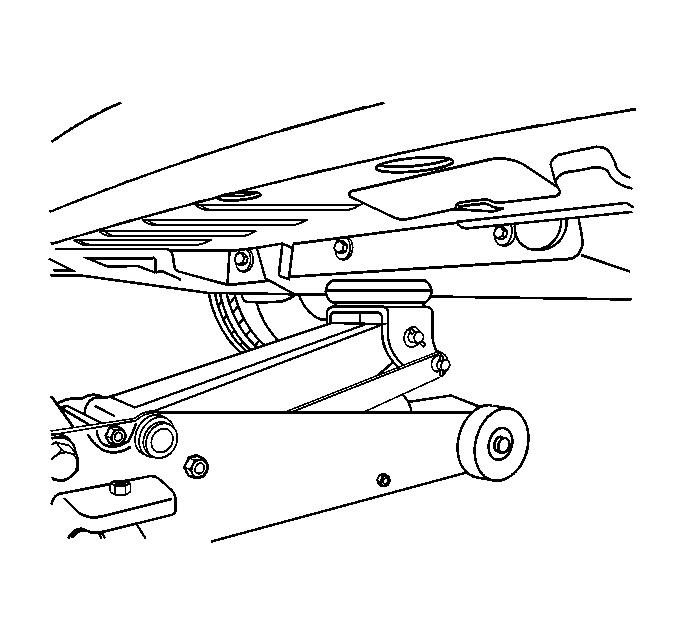Vehicle Lift Points
Caution: To help avoid personal injury, always use jack stands when you are working on or under any vehicle that is supported only by a jack.
Caution: To avoid any vehicle damage, serious personal injury or death when major components are removed from the vehicle and the vehicle is supported by a hoist, support the vehicle with jack stands at the opposite end from which the components are being removed and strap the vehicle to the hoist.
Notice: When you are jacking or lifting a vehicle at the frame side rails or other prescribed lift points, be certain that the lift pads do not contact the catalytic converter, the brake pipes or the fuel lines. If such contact occurs, vehicle damage or unsatisfactory vehicle performance may result.

Before you begin any lifting procedure, ensure that the vehicle is on a clean, hard, level surface. Ensure that all of the lifting equipment meets weight standards and is in good working order. If you are only supporting the vehicle at the frame side rails (3), ensure that the lifting equipment does not put too much stress on or weaken the side rails. If you use any other lifting methods other than those described, use care not to damage the fuel tank, the exhaust system, or the underbody.
Suspension Contact Hoist
Front Lift

Position the suspension contact front lift under the outer edge of the front suspension lower control arms.
Rear Lift

Position the suspension contact rear lift under the rear tire and wheel assemblies.
Jacking
Important: Jacking on the control arms is not recommended.
When you are lifting a vehicle with a vehicle jack or a floor jack, block the wheels at the opposite end from which you are lifting. Use jack stands to provide additional support.
Under the Frame Rails
Position the floor jack pad as follows:

Important: The floor jack pad must not contact the rocker panel outside of the frame rail reinforcements.
Important: The floor jack pad must not contact the floor pan.
Under the frame rail reinforcements.
Supporting the Vehicle with Jackstands
Place jackstands ONLY under strong and stable vehicle structures.
